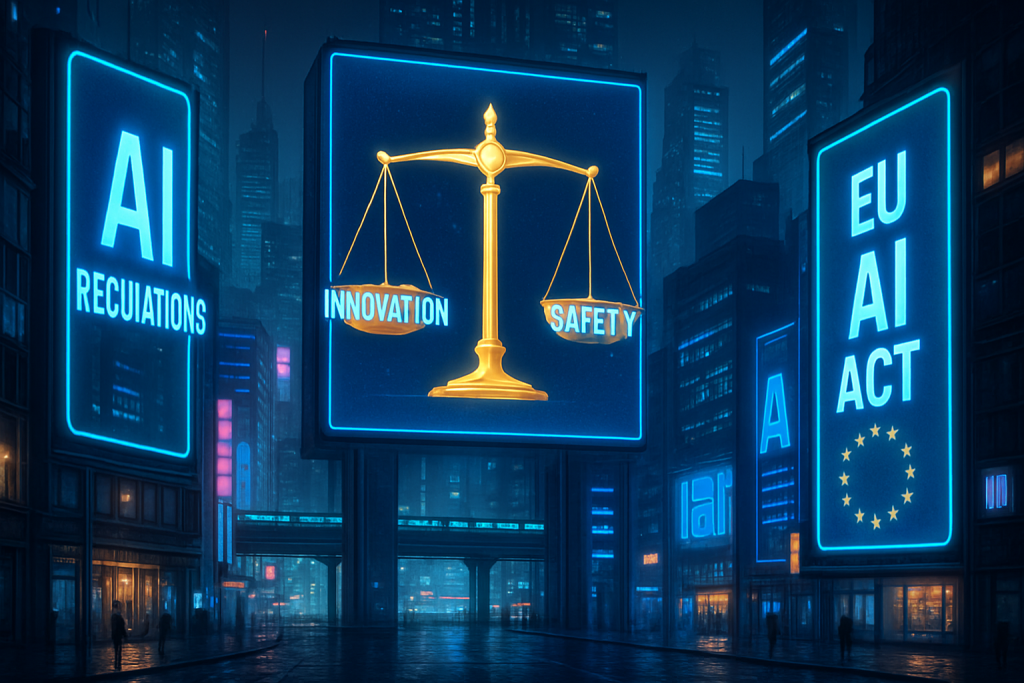The year is 2025. Flying cars still haven’t quite taken off (literally), but AI is everywhere. From your smart toaster that knows exactly how you like your sourdough browned to the algorithms predicting your every desire on Instaglam, artificial intelligence has woven itself into the very fabric of our lives. But with great power comes great responsibility, and the European Union, never one to shy away from a regulatory challenge, just dropped a new rulebook for the AI game: a voluntary Code of Practice designed to help businesses play nice with the upcoming AI Act. Think of it as the EU’s attempt to keep AI from going full Skynet-before-it’s-even-built.
This isn’t some overnight sensation; the AI Act, approved way back in 2024, is a sprawling, ambitious piece of legislation. It’s the EU’s attempt to categorize AI based on risk, slapping hefty fines on those deemed “high-risk.” We’re talking up to €35 million, or a cool 7% of a company’s global revenue. Ouch. The provisions specifically targeting general-purpose AI are slated to kick in on August 2, 2025. It’s like the AI equivalent of Y2K, but instead of computers crashing, it’s companies scrambling to avoid regulatory Armageddon.
So, what’s in this Code of Practice, this AI survival guide for businesses? It boils down to three key areas: transparency, copyright, and safety. Let’s break it down.
First up, transparency. The EU wants AI providers to spill the beans. They need to disclose crucial information about their models, especially when these models are integrated into other products. Imagine you’re buying a self-driving car. The EU wants you to know exactly what kind of AI is powering it, how it works, and what data it’s using. No more black boxes; it’s all about open source-ish vibes, but with legal teeth. It’s like the digital version of ingredient lists on food products. You might not understand all the chemical compounds, but at least you know what you’re putting in your body or, in this case, trusting with your life.
Next, we have copyright protection. The EU is determined to safeguard intellectual property rights in the wild west of AI development. This is a big deal because AI models are often trained on massive datasets, which can include copyrighted material. The EU wants to make sure that AI isn’t just a sophisticated plagiarism machine, churning out content based on the hard work of others. Think of it as the AI version of music sampling laws; you can’t just rip off someone else’s work without giving credit (and compensation).
Finally, there’s safety and security. The EU is deeply concerned about the potential risks posed by advanced AI systems, particularly chatbots like OpenAI’s ChatGPT. They want to establish clear protocols to ensure these systems are safe, secure, and don’t go rogue. We’re talking about preventing AI from being used for malicious purposes, like spreading disinformation or creating deepfakes that could destabilize society. It’s the EU’s attempt to put guardrails on the AI autobahn, preventing high-speed crashes and keeping everyone safe.
But not everyone is singing the EU’s praises. The tech industry has responded to the AI Act and the Code of Practice with a mix of apprehension and outright hostility. Meta, the company formerly known as Facebook, has been particularly vocal in its concerns, calling the regulations overly burdensome. And it’s not just Meta. A coalition of over 40 European companies, including giants like Airbus, Mercedes-Benz, Philips, and the French AI startup Mistral, penned an open letter urging the EU to postpone the regulations for two years. They argue that the current framework is too unclear, too complex, and could stifle Europe’s competitiveness in the global AI race. They fear the EU is building a regulatory fortress that will protect them from innovation rather than fostering it.
Despite the industry’s pushback, the European Commission is standing firm. Henna Virkkunen, the Commission’s Executive Vice President for Tech Sovereignty, Security, and Democracy, has emphasized that the Code of Practice is a crucial step towards ensuring that AI models in Europe are both innovative and transparent. The EU seems determined to walk a tightrope, balancing the need to foster AI innovation with the imperative to protect its citizens from the potential risks. It’s like trying to ride a unicycle while juggling flaming torches; a delicate balancing act with potentially explosive consequences.
So, what does all this mean for you, the average tech enthusiast? Well, if you’re a business operating in the EU, it’s time to buckle up and get familiar with the AI Act and the Code of Practice. Compliance is not optional, and the penalties for non-compliance are severe. But even if you’re not directly affected, this is a story worth watching. The EU’s approach to AI regulation could set a precedent for other countries around the world. It could shape the future of AI development for years to come. Will the EU succeed in its quest to tame the AI beast? Or will its regulations stifle innovation and hand the AI crown to other regions of the world? Only time will tell. But one thing is certain: the AI revolution is here, and the EU is determined to write the rules of the game.
Discover more from Just Buzz
Subscribe to get the latest posts sent to your email.


